
Low water pressure in the kitchen sink is not always due to a serious plumbing issue. If all of the other faucets in the house have good water pressure, the problem could be narrowed down to water lines, shutoff valves, a small leak or the faucet itself. It is best to begin searching for the cause of the low pressure by checking the lines and valves first, and then move on to the faucet. You do not want to take the faucet apart or replace it if the source of the low pressure is a simple fix underneath the sink.
Water Lines
Video of the Day
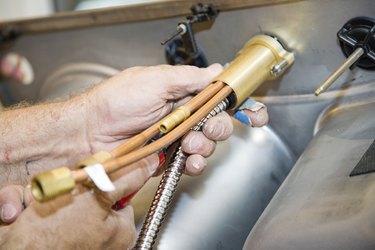
There are two water lines underneath the sink that are each connected to a shutoff valve and to the faucet handles. One water line is for hot water, the other is for cold water. Water lines are made of either flexible hoses or copper. A kink on either one of the lines could cause low pressure. A flexible water line hose can be straightened out, but a copper line will most likely need to be replaced.
Video of the Day
Shutoff Valves
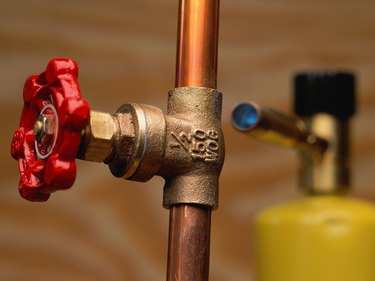
Shutoff valves control the amount of water that flows through the faucet. Shutoff valves that aren't turned all the way on can lead to less water pressure. The handles on the shutoff valves should be turned all the way to the right as far as they will go.
Connections
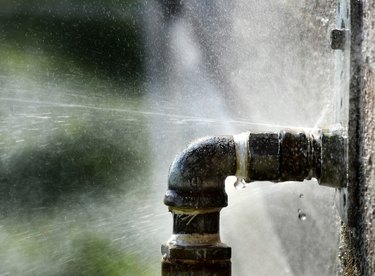
Small leaks can go unnoticed for a long time. Even a small leak can reduce water pressure. All water line connections should be tight. The retaining nut located on both ends of the water lines must be tightly turned clockwise or to the right.
Aerator
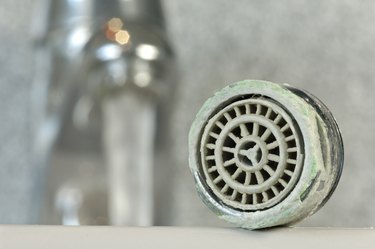
A faucet aerator is connected to the end of the spout. The aerator consists of a threaded metal ring, screen and filter. Over time, the filter on the aerator can become clogged with mineral deposits, which results in a loss of water pressure. You can check to see if this is the problem by removing the aerator and turning on the faucet. Good water pressure after the aerator has been removed often means you just need to clean the aerator or replace it.
Diverter
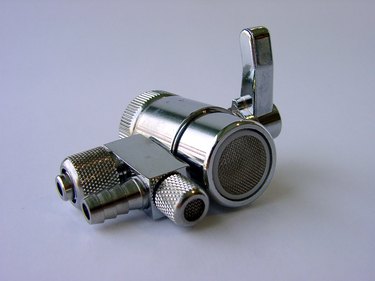
Worn or corroded diverter valves can cause a kitchen faucet to lose water pressure. The diverter is located underneath the spout. The diverter is designed to sense a change in water pressure when you turn the water handles. Turning on the hot water and the cold water causes the diverter to move to allow both to run at the same time. The diverter will also move to block the water coming out of the spout when you use a sprayer. A corroded diverter cannot properly do its job.